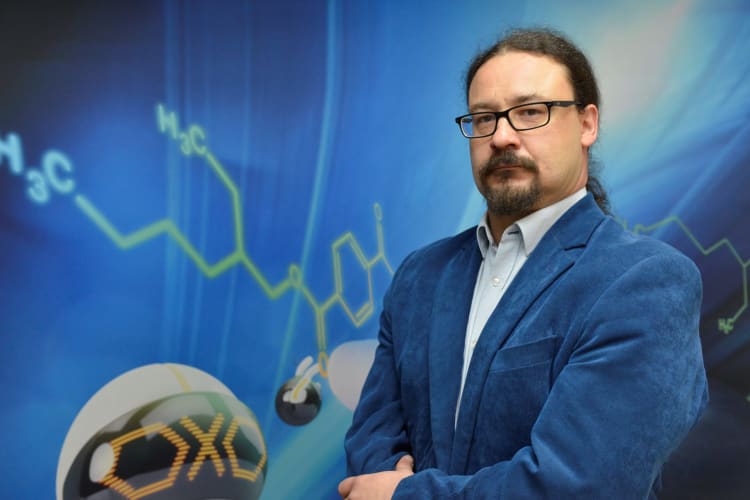
We talk with Maciej Budner, head of the Oxoplast Business Unit, about the impact of the economic situation on the current state of the market and the idea of business growth in the spirit of Zielone Azoty (Green Azoty).
What is Segment Oxoplast’s business based on?
We manufacture OXO alcohols, aldehydes and plasticizers, which are used in virtually every area of daily life. Among our customers are companies from industries such as chemical processing, plastics, paints and varnishes, medical, automotive, as well as manufacturers of building materials, plant protection products, and fuel additives…
What is our market position in the Oxoplast area?
In Europe, we are the second largest manufacturer of 2-Ethylhexanol, our primary OXO alcohol, and the first manufacturer of DOTP plasticizer, which is marketed under the brand name Oxoviflex. In this respect, our company is unique in the European Union, as production takes place at dedicated installations and the main process line is based on the continuous esterification technology developed by us and ICSO “Blachownia”. Additionally, this favorably affects the purity of the product and its qualitative stability, while also influencing the processing parameters of the finished products. After all, for all products we have adopted the ZAK Quality principle…
As for Poland, we are the only manufacturer of OXO alcohols and the leader in the area of plasticizers. The Polish market accommodates approx. 20% of Segment Oxoplast’s products.
Our core business is the European market, mainly the EU countries, and for several years we have also been successfully expanding our market in North America.
Due to the EU regulations and the general industry trends, several years ago Grupa Azoty ZAK decided to discontinue its orthophthalate products. Have you been able to find replacements for all applications, or are there any gaps left by the phthalate products?
We definitely don’t miss phthalates. Discontinuing their production was a measure that the company consciously took in view of the regulations coming into force back then, which continue to have a significant impact on the nature of the market. Particularly as regards higher orthophthalates, there is a successive move to restrict their use in further segments, especially when it comes to sensitive applications such as medical supplies, children’s toys and food packaging.
We are well aware that the path that Europe and the entire world are following and will continue to follow involves further restrictions on orthophthalates. So it was a natural course of action for us to set up a large plant for the production of DOTP (Oxoviflex non-ortho phthalate plasticizer – ed. note).
What goals for Segment Oxoplast result from Grupa Azoty’s strategy and the Green Azoty (Zielone Azoty) program?
Expanding the portfolio and developing new product platforms is the main goal, and work is already underway. The Green Oxoplast (Zielony Oxoplast) concept is being developed, as a natural part of the Green Azoty (Zielone Azoty) program.
Alongside the production of aldehydes and OXO alcohols, it is necessary to develop a so-called “business leg” using bio-renewable raw materials and bio oriented products, which will segmentally replenish our existing range of products. This is the path that leads to being environmentally responsible.
In terms of the production of OXO alcohols and plasticizers itself, we are leaning toward tapping energy sources to power our facilities, which will not rely on conventional energy sources. Our focus is also on boosting energy efficiency by conducting, e.g., thermal modernization of the Oxoplast Business Unit’s facilities. A sizable portion of the OXO and ester plant apparatus has already been put through this process.
How will the recently launched Research and Development Center support Segment Oxoplast’s activities?
Since we have had an application laboratory for several years, we have closely studied the processing of our plasticizers in PVC formulations, as well as the impact of their quality on the parameters of the finished product. This knowledge is invaluable, and also affects our ability to operate in a market that is becoming increasingly specialized with each passing year.
Meanwhile, the opening of another facility - the Research and Development Center - will be crucial for the development of technologies and products based on bio-renewable raw materials. Zielony Oxoplast (Green Oxoplast) is expected to be a complementary project created in close cooperation with development and investment services, and should cover the stages from the launch of research to the final product.
How can we run a business after the pandemic, facing the war across the eastern border? Can we talk about any kind of stability and action planning given these circumstances?
It is essential to distinguish between two issues here – strategic planning and operational planning. If we look at business cycles from the perspective of several decades, ups, downs and crises are nothing new, so the strategic goals of the business that we presented in Grupa Azoty’s Strategy remain unchanged.
In recent years, we have experienced a demand and price boom, largely fueled by the COVID-19 pandemic, which postponed the economic downturn seen in the latter half of 2019. The pandemic fundamentally changed people’s habits. Purchasing capacity and demand for products, largely the ones for which our products are used, have increased. Consequently, Segment Oxoplast recorded peak results in 2021.

Maciej Budner, head of the Oxoplast Business Unit, Grupa Azoty



